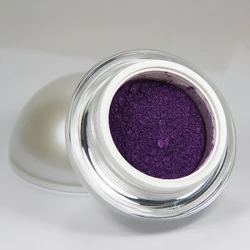Key Points about Orpiment Pigment
2024-04-25
Orpiment is a naturally occurring mineral that has been used historically as a pigment in painting, particularly in ancient and medieval times. Here are some key points about orpiment pigment:
1. Chemical Composition: Orpiment is a sulfide mineral composed of arsenic trisulfide (As2S3). It has a bright yellow to golden-yellow color and is sometimes found associated with realgar, another arsenic sulfide mineral.
2. Historical Use: Orpiment has a long history of use as a pigment in art and decoration. It was commonly used by ancient civilizations such as the Egyptians, Greeks, Romans, and Chinese. Orpiment was prized for its vivid yellow hue and was often used in illuminated manuscripts, paintings, ceramics, and textiles.
3. Toxicity: Orpiment contains arsenic, which is highly toxic if ingested or inhaled. Artists and craftsmen who worked with orpiment pigment in the past were at risk of arsenic poisoning due to exposure to its dust or fumes. Today, orpiment is rarely used in art due to its toxicity and the availability of safer alternatives.
4. Chemical Stability: Orpiment is relatively stable in dry conditions but can degrade over time when exposed to moisture, light, or acidic environments. It may darken or deteriorate, leading to discoloration or loss of pigment intensity in artworks.
5. Replacement: Due to its toxicity and instability, orpiment has largely been replaced by synthetic pigments and safer alternatives in modern art materials. Synthetic pigments that mimic the color of orpiment, such as cadmium yellow and various organic yellows, are widely used by artists today.
6. Conservation: Orpiment-containing artworks require special care and handling due to the potential hazards associated with arsenic. Conservators and art historians work to identify orpiment pigments in historical artworks and take appropriate measures to ensure their preservation and safe display.
Overall, while orpiment pigment has played a significant role in art history, its use has declined due to health and safety concerns. Artists and collectors should exercise caution when handling orpiment-containing materials and seek safer alternatives for artistic purposes.



